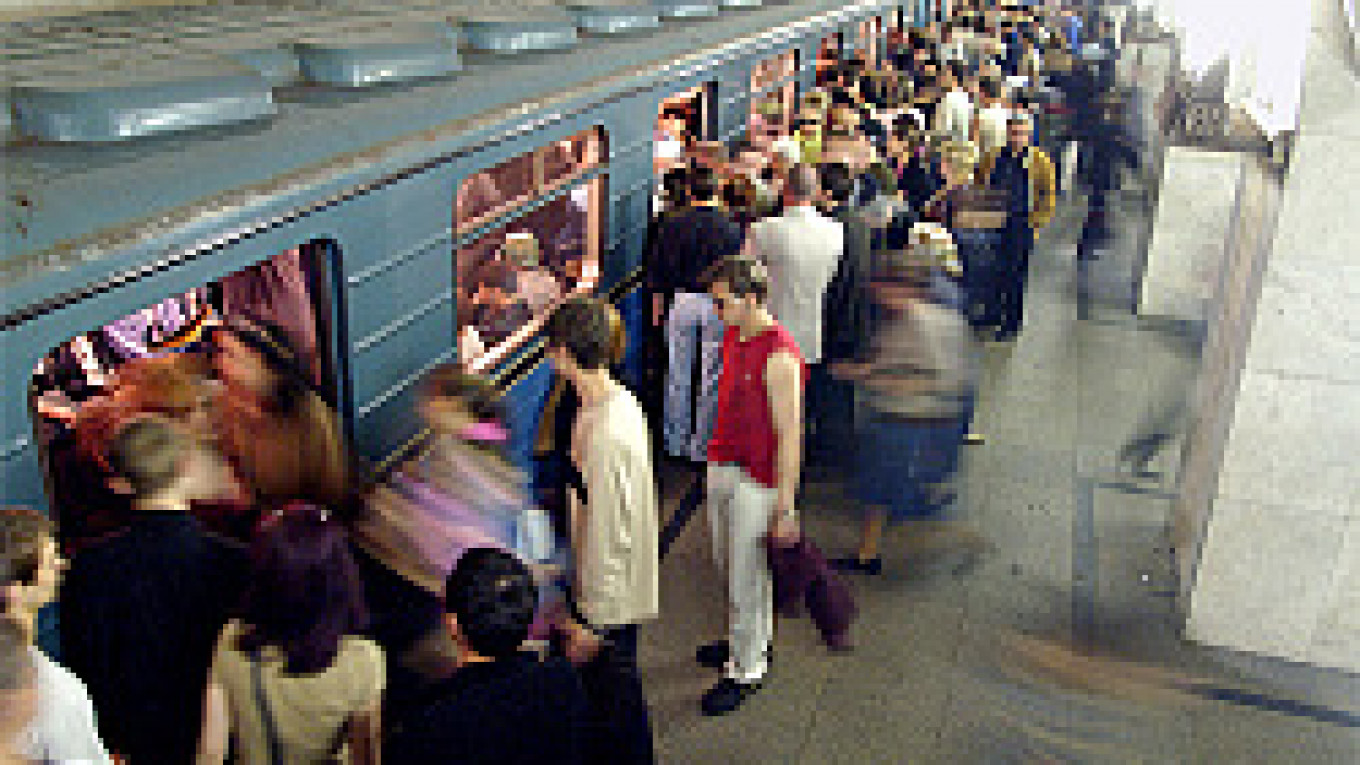But to get the real museum experience and discover how the metro truly works, they would have to follow a convoluted route at Sportivnaya metro station, toward the southern escalator, through a room where police are checking documents, past those that are detained and up two flights of stairs. Finally, there is a door marked with a sign that reads "Museum of the Moscow Metropolitan."
"Russians or foreigners, groups or individuals -- everyone is welcome to come find out why Moscow's metro is the best in the world," said Konstantin Cherkassky, the museum's director. "Entry is free," he added. "You just have to know where to find us and come before we close."
Although Cherkassky does not speak English, there is still quite a bit that he can show those with no knowledge of Russian. Ask him to start up a miniature model escalator, and he'll be only too happy to reveal its inner workings; have him take you to a room containing several generations of metro traffic control machinery, and he'll let you try to operate them yourself; or follow him into an engineer's cabin, and watch him flip the switch responsible for the famous "Ostorozhno, dveri zakryvayutsya" (Attention, doors are closing).
He might also use a life-size model of the tracks to demonstrate how to retrieve dropped purses or explain what to do if you are the one that falls down -- "You'll only get electrocuted if you try to climb out, so just walk forward and away from oncoming trains and wait for assistance. Or, if a train is coming too quickly, just lie down and let it go over you, although that would probably be a bit unpleasant."
"But there is also a lot of material available for those who would prefer to wander through the museum on their own," Cherkassky said.
This includes a set of early 20th-century plans for an above-ground train system, photographs of the metro's construction, flyers from the 1930s, containing lines such as "All of Moscow is building the metro" and "All hail Stalin -- we have a metro," pictures of the stations being used as bomb shelters during World War II and a collection of the various tokens and tickets used in the metro over the years.
Moscow's metro has, in a sense, become the city's largest and most visited museum, while the museum of the Moscow metro has remained one of its smallest and most hidden. Go see the second if you want to understand the first.
The People's Museum of the Moscow Metropolitan is located near the southern vestibule of Sportivnaya metro station. Tues. to Sun. 9 a.m. to 4 p.m., Mon. 11 a.m. to 5 p.m. Tel. 622-7309/7833.
A Message from The Moscow Times:
Dear readers,
We are facing unprecedented challenges. Russia's Prosecutor General's Office has designated The Moscow Times as an "undesirable" organization, criminalizing our work and putting our staff at risk of prosecution. This follows our earlier unjust labeling as a "foreign agent."
These actions are direct attempts to silence independent journalism in Russia. The authorities claim our work "discredits the decisions of the Russian leadership." We see things differently: we strive to provide accurate, unbiased reporting on Russia.
We, the journalists of The Moscow Times, refuse to be silenced. But to continue our work, we need your help.
Your support, no matter how small, makes a world of difference. If you can, please support us monthly starting from just $2. It's quick to set up, and every contribution makes a significant impact.
By supporting The Moscow Times, you're defending open, independent journalism in the face of repression. Thank you for standing with us.
Remind me later.


